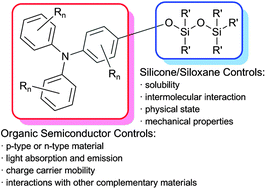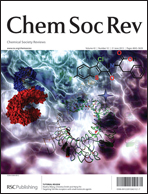The use of siloxanes, silsesquioxanes, and silicones in organic semiconducting materials
Abstract
Optimization of the physical and electronic properties of organic semiconductors is a key step in improving the performance of organic light emitting diodes, organic photovoltaics, organic field effect transistors, and other electronic devices. Separate tuning of the physical and electronic properties of these organic semiconductors can be achieved by the hybridization of organo-silicon structures (


 Please wait while we load your content...
Please wait while we load your content...